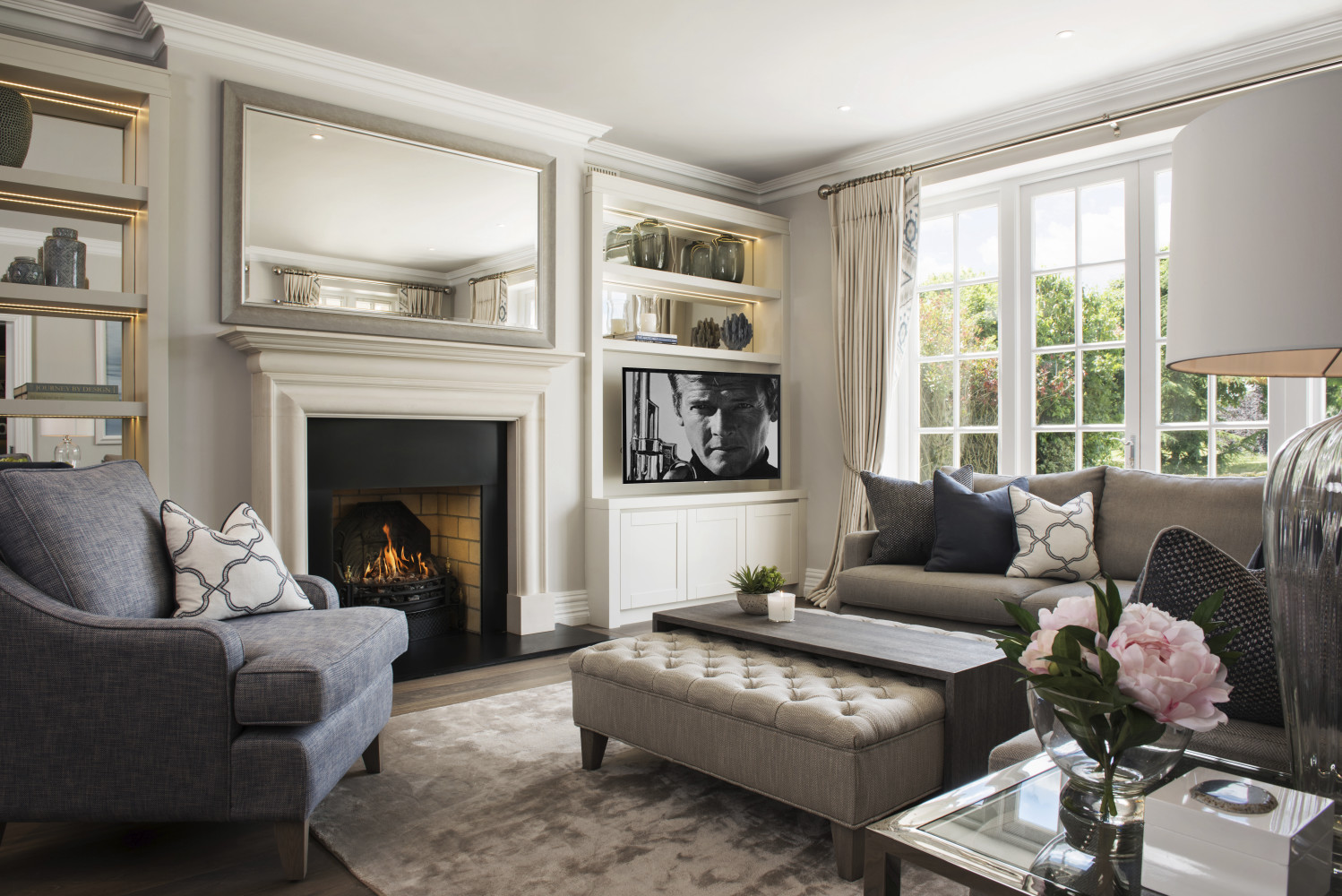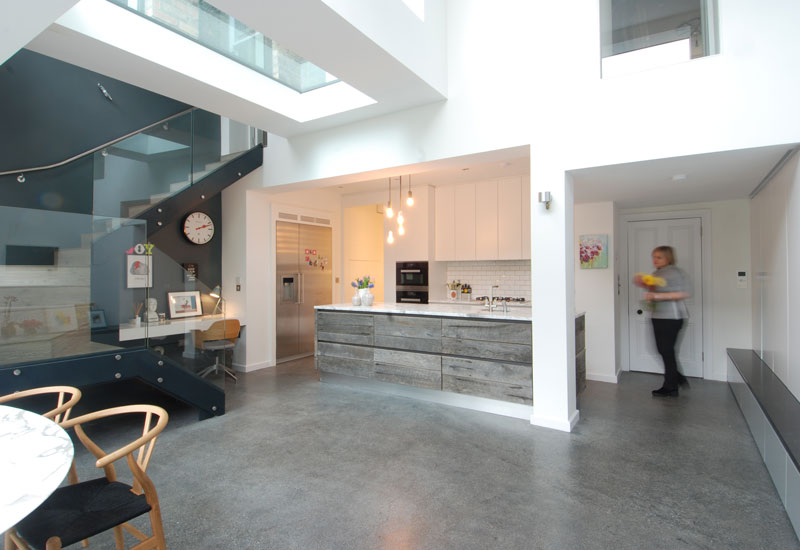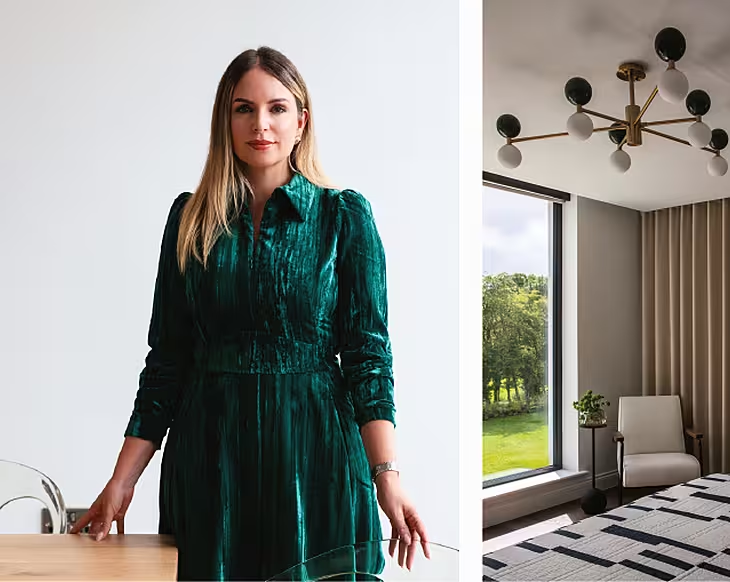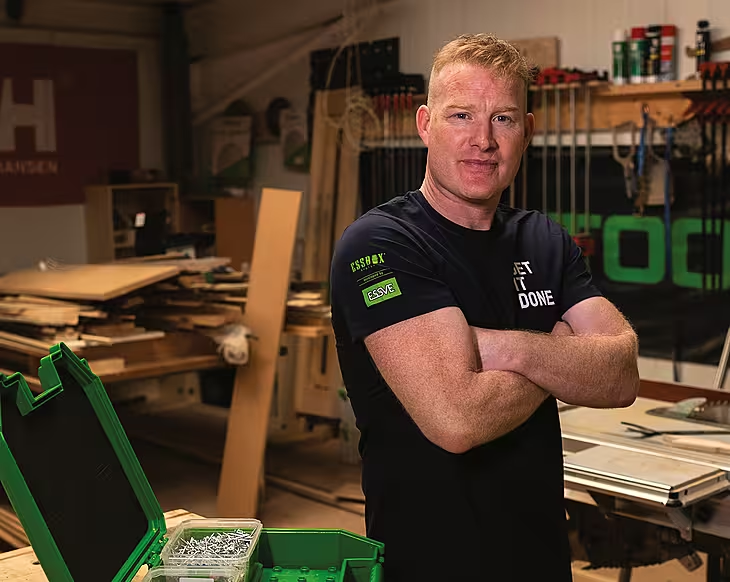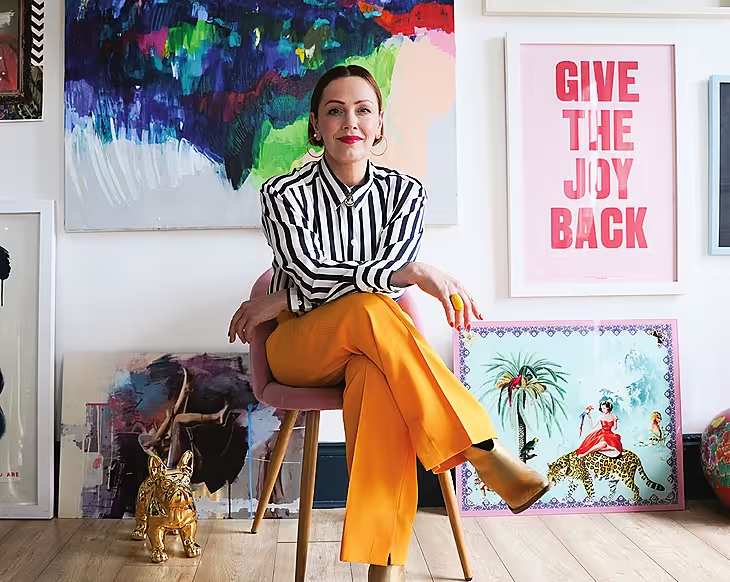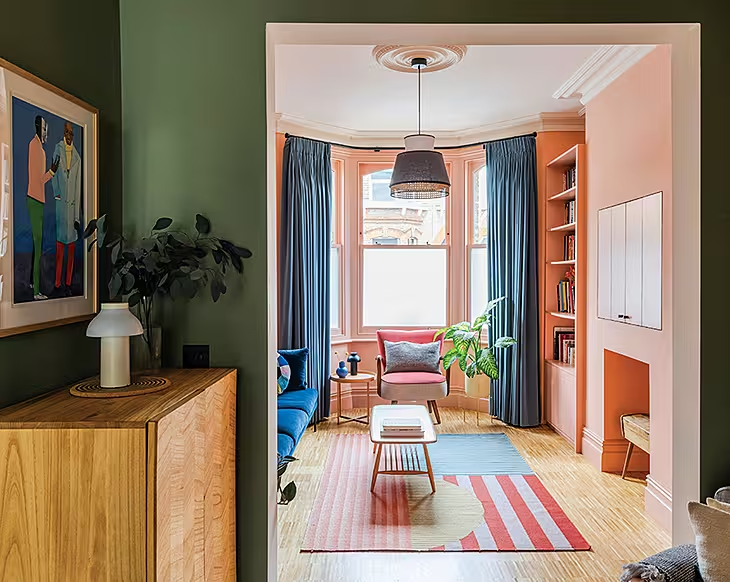How to buy bespoke furniture: Commissioning a bespoke piece of furniture that’s been beautifully hand-crated or custom-made to suit your needs and space can seem a little daunting, but it needn’t be. Here’s how to get through the process step-by-step.
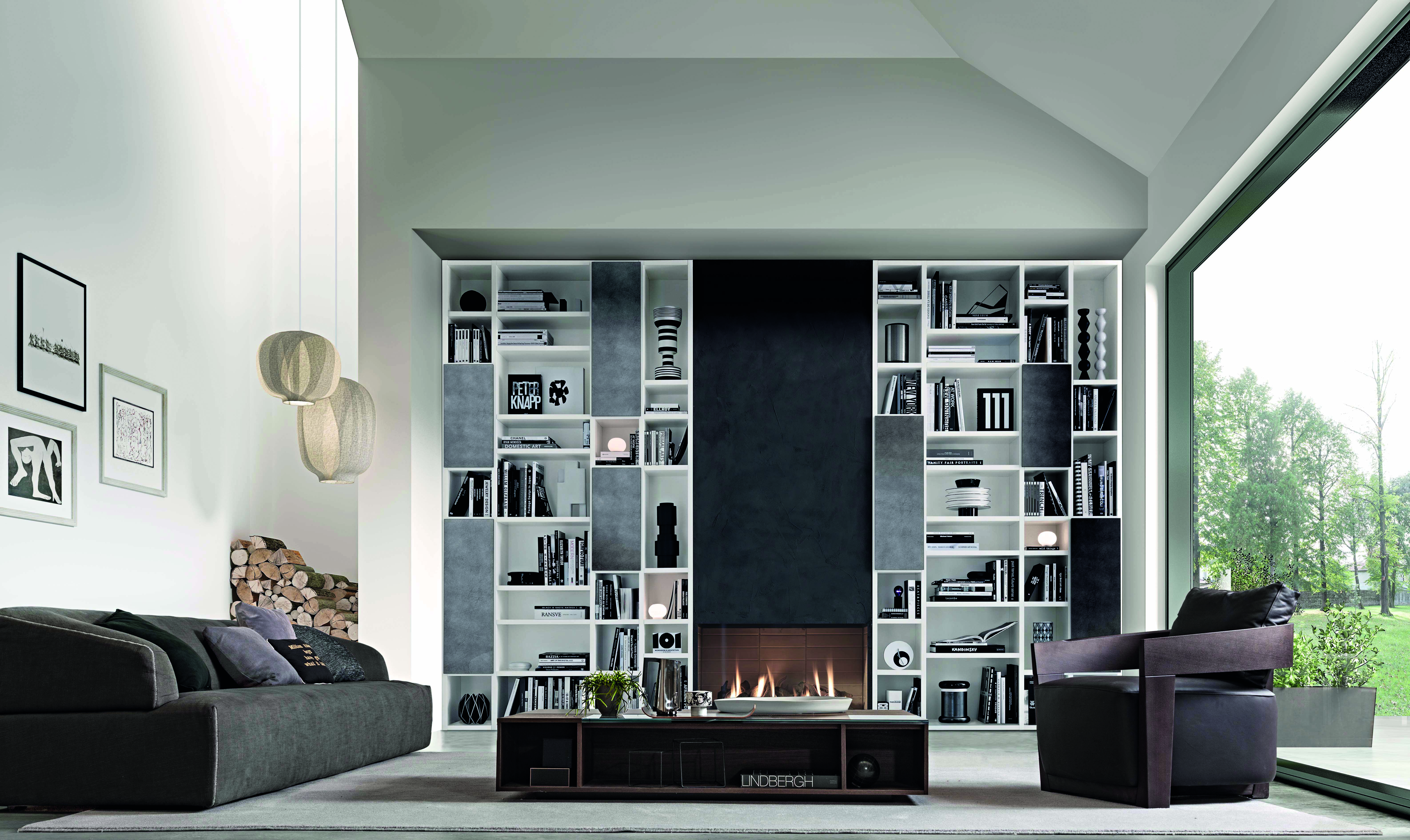 The Jesse Open living room storage system, from €1,500, offers endless design possibilities allowing for a truly customised solution for your space. This bookcase solution, pictured, costs €9,400 from Lomi.ie.
The Jesse Open living room storage system, from €1,500, offers endless design possibilities allowing for a truly customised solution for your space. This bookcase solution, pictured, costs €9,400 from Lomi.ie.When it comes to kitting out our homes, there’s no denying that it’s easier, cheaper and more convenient to opt for mainstream, mass-produced pieces from the high street, furniture superstores and even the internet. And while most of the time you can get exactly what you want, occasionally you can’t.
With homeowners needing to make the most of space more than ever buying bespoke is fast becoming a more accessible and viable option. Why settle for storage that doesn’t quite fit your alcove as snugly as you’d like or compromise on a console table that’s not the correct size or shape for your space? A skilled craftsperson or specialist design company can be commissioned to custom-make an original and unique piece of furniture that reflects your personal style, to your exact specifications.
Sure, it will cost considerably more than buying straight off-the-shelf, but it’s not as expensive as you might think. And don’t be put off by the idea that bespoke is just for creative types either.
For those with no experience of commissioning knowing where to start can be a challenge. How much should you pay? Where do you begin to search for the right maker? What does the process involve? To help you out, read our seven-step guide on how to commission bespoke furniture, the right way.
Step 1: Drafting a brief
The clearer you are about what you want, the easier the process
Before you even approach anyone sit down and think about what it is you want. When it comes to bespoke the possibilities are almost endless. From dining tables to desks, sofas, kitchens, bookcases and even headboards and sliding doors, anything can be custom-made.
Once you’ve identified what you want and done some preliminary research, you’ll need to articulate your requirements into a detailed design brief.
“When commissioning something bespoke you’re taking a leap of faith that the designer or company will get it right. The clearer you are about what you want – or don’t want – from the start, the smoother the process will be,” says Lorraine Stevens of Lomi Design, specialists in customised and bespoke contemporary furniture and interior design solutions.
“Prepare a wish-list of your requirements, take measurements, think about materials, look at examples of work you like and try putting together a look book of images from your research,” says Lorraine.
If you don’t know exactly what you want or how to express it, don’t panic. It’s part of a designer’s role to advise and suggest options.
Step 2: Finding the right maker
You’ll need to be able to work together and trust each other
Nothing beats hearing about a designer or company through word-of-mouth recommendations. Ask family and friends about their experiences and speak to companies who provide a bespoke service in your area. The Design & Crafts Council of Ireland has a detailed directory of designers/craftspeople by discipline and county on its website which you can browse.
Lorraine advises contacting a few makers and retailers who sell the style of furniture you like to see what they can do for you
“Visit their showrooms. Ask to see examples of their work; check construction and how well pieces are made. Design will play a big factor in your decision as will their expertise. A large part of course will be whether you think you can work together.”
“Making furniture to commission is a collaborative process,” says Conor Kelly of Snug, a small furniture-making workshop in Snugboro, Co Wicklow.
“It’s hugely important to the success of the project that the client trusts the maker and feels invested in the process from a creative point of view.”
Step 3: Discussing costs
It pays to be upfront about your budget from the start
Bespoke furniture isn’t cheap, but it doesn’t have to break the bank either. It’s important you are upfront about your budget from off otherwise it’s a complete waste of everyone’s time.
“Unfortunately, a lot of people hear the word bespoke and straight away they’re put off because they think it’s going to cost a fortune,” says Conor. “Commissioning a fully bespoke, one-of-a-kind piece is expensive but it’s not extortionate. A good designer will always aim to work within your budget.”
Generally you can expect to pay up to 50 per cent more than off-the-peg. You can reduce costs by using different materials or adapting how it’s constructed but essentially what you’re paying for is the maker’s creativity, workmanship, dedication, time and expertise.
“It can be difficult to get a client to appreciate that they’re not just paying for materials and labour. The design takes so much time and effort I often lie in bed at night thinking of ideas,” says Conor.
Finding a design company or retailer that offers ‘bespoke elements’ or customisation services that allow ready-made designs to be tweaked to make furniture more personalised to you can be a way of getting what you want at a reduced cost. “That’s not to say it’s a cheap option. Even bespoke elements produced in a factory situation take time and effort,” says Lorraine.
“By working with European manufacturers we can make the most of what they can do economically with some clever, customised design tweaks. For example, we can make a bespoke sideboard or storage system using component parts from other furniture and ranges. This helps us to ensure a high quality finish and a timely delivery while also keeping the costs under control.”
Ventura, headed by up owner and leading interior designer Arlene McIntyre is another company that offers customisation as well as completely one-off pieces. It has three showrooms (two in Dublin and one in Cork) including its own manufacturing factory in Dublin.
“Because we make everything ourselves, from bespoke headboards to sofas, dining tables, chairs and headboards, we are able to be competitive and keep costs down. Having our own showrooms where clients can come and test drive our off-the-shelf products also helps to take some of the fear and uncertainty out of commissioning or customising,” says Arlene. “Clients can see styles, colours, finishes and materials and how display pieces could be adapted to suit their needs.”
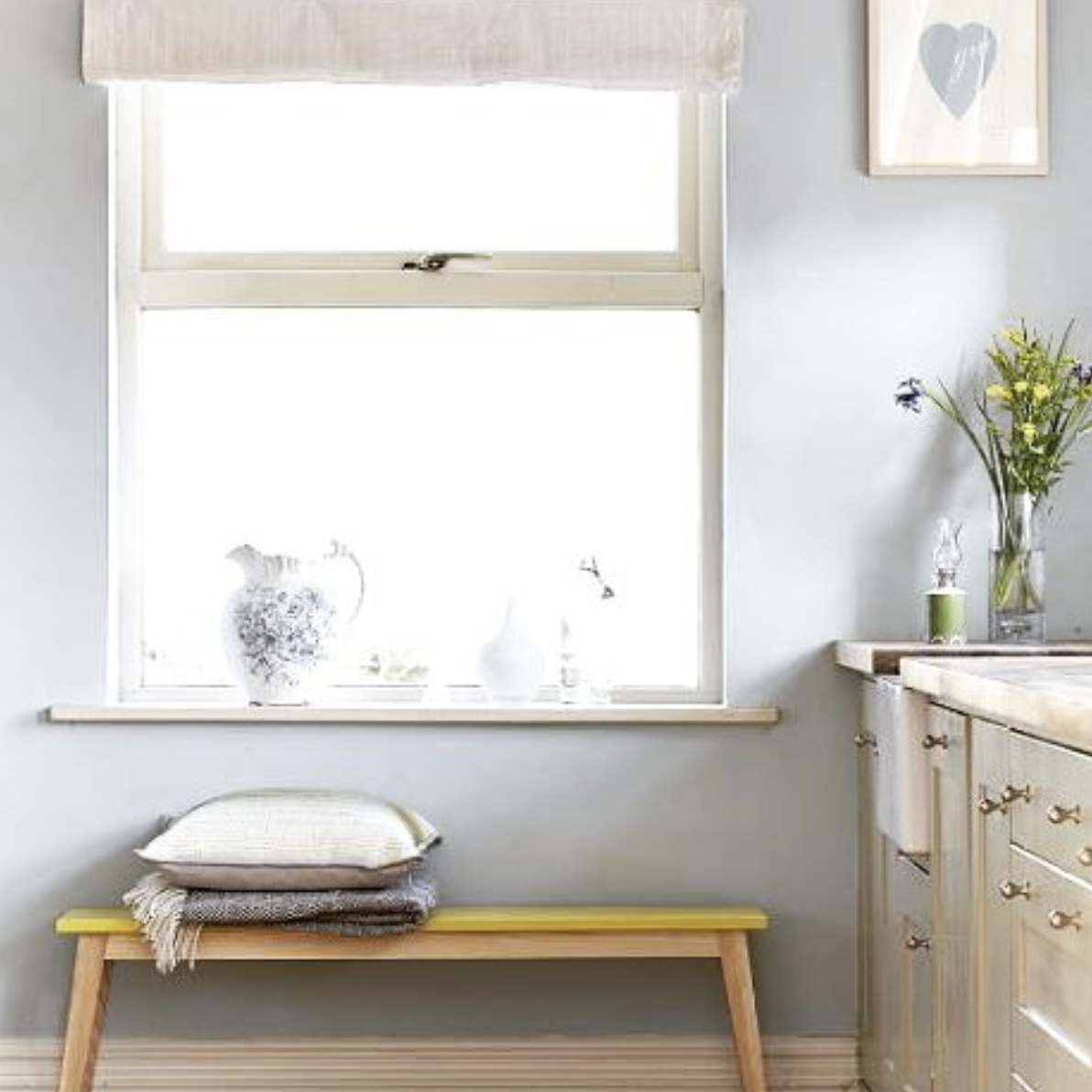 Image: Snug.ie
Image: Snug.ieStep 4: The design stages
You can’t short-circuit the design stages if you want something unique
Custom furniture can take as much time to design, if not longer, as it does to make. You must be prepared to invest your time as well if you want something unique. Expect a lot of towing and frowing with emails, phone calls and even workshop visits.
“One of the biggest perks of having something custom-made is that you are in control of nearly all the design aspects, including size and how it will look, and throughout the design stages,” says Conor.
Usually a designer creates a design brief as a starting point for making initial sketches and gathering material samples. These will help highlight the design elements you feel are important. From this information sketches are evolved into more detailed drawings.
“The designer will also offer advice on any design improvements and materials choices as well,” says Lorraine.
The design may be changed a number of times, or not, until agreement is reached. Once happy, the designer will draw up a final design or 3D model if necessary.
Step 5: Approving the design
Don’t sign off on a design if you don’t truly understand it
“You may work your way through several design options before choosing a final solution so make sure to sign off on the final design and check all details before going ahead,” advises Lorraine.
“When buying bespoke it’s important to know that as a consumer you don’t have the same rights as when buying off the shelf. You can’t simply exchange an item or return it if you don’t like it.”
If you are concerned about something, get the designer to explain it. Making changes once manufacture has started is extremely costly. There should never be a surprise when you’re presented with the final result.
“If you’re commissioning a designer maker you can arrange to visit their workshop to see your piece taking shape. “The experience of seeing the creation and development of your furniture can certainly enhance your enjoyment of it,” says Conor.
Step 6: Deposits and payments
Be clear on payment stages and timescale of the project
Once you’ve approved the final design you can agree on a works schedule and delivery time. It’s usually standard to pay a deposit of 50 per cent up front and the rest of the money in stages, or the final 50 per cent once designed – just before delivery. Manufacture can take anything from eight to 14 weeks, with the average around 12 weeks.
Step 7: Receiving the finished piece
Congratulations you are officially a patron of the arts
You are now the proud owner of a completely original piece of furniture that may well endure into future legacies. Hopefully you will have enjoyed the process. With any luck you may have made a friend and may even consider commissioning more pieces.

